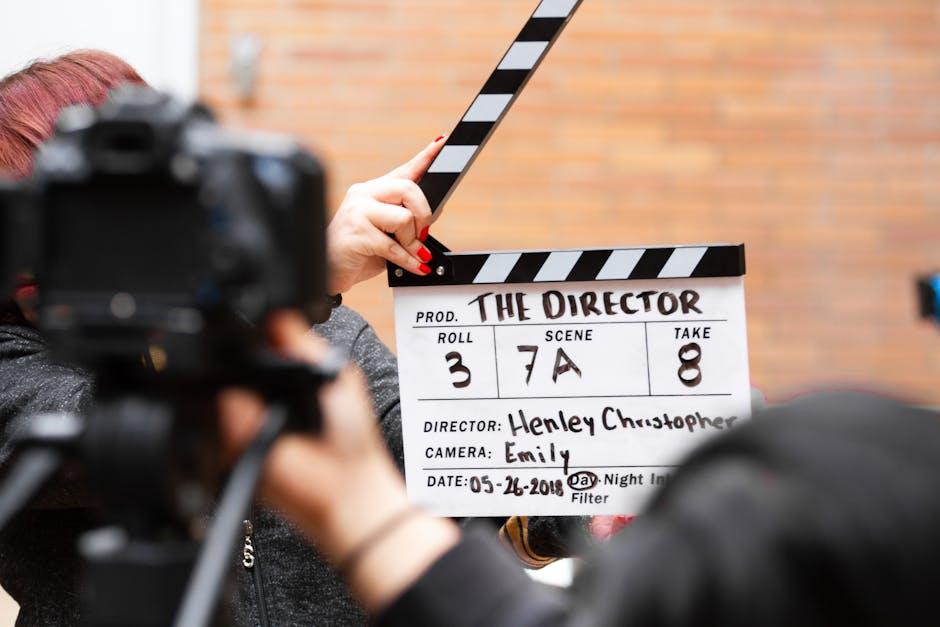In the intricate dance of filmmaking, where every frame is a canvas and every scene a tapestry, the collaboration between directors and designers emerges as a symphony of creativity and vision. Together, they weave the visual language that speaks to audiences beyond dialogue and action. This partnership is a delicate balance of imagination and practicality, where the director’s narrative vision finds its physical form through the designer’s artistry. In this exploration, we delve into the dynamic interplay between these creative minds, uncovering the secrets behind crafting a truly unique visual experience that captivates and resonates.
Crafting the Vision: Building a Shared Aesthetic Language
In the intricate dance of filmmaking, the synergy between directors and designers is crucial to crafting a compelling visual narrative. This collaboration hinges on developing a shared aesthetic language that ensures every frame resonates with the intended emotion and theme. Directors often convey their vision through mood boards, references, and detailed discussions, while designers translate these abstract concepts into tangible visual elements. This process involves:
- Color Schemes: Establishing a palette that reflects the film’s mood, whether it be the somber tones of a drama or the vibrant hues of a comedy.
- Texture and Material Choices: Selecting fabrics, props, and set materials that add depth and authenticity to the visual storytelling.
- Lighting Design: Collaborating on how light interacts with the set and characters, influencing the atmosphere and emotional impact.
Through iterative discussions and creative exchanges, directors and designers cultivate a visual lexicon that aligns with the story’s essence. This partnership transforms abstract ideas into a cohesive, immersive experience for the audience, ensuring that every visual element serves the narrative purpose.
From Script to Screen: Translating Narrative into Visuals
In the intricate dance of filmmaking, directors and designers form a dynamic partnership, each bringing their unique expertise to the table to transform the written word into captivating visuals. Directors, with their vision, guide the narrative, while designers—be it production, costume, or set designers—infuse the film with its aesthetic soul. This collaboration begins with storyboarding, where the director’s ideas are sketched out, creating a visual roadmap. Designers then dive into research, pulling inspiration from diverse sources to build an authentic and immersive world.
- Color Schemes: Directors and designers meticulously choose color palettes to evoke specific emotions and enhance the narrative.
- Set Design: Designers craft environments that reflect the story’s tone, often working with directors to ensure every detail aligns with the vision.
- Costuming: Characters’ wardrobes are carefully selected to communicate their personality and evolution, providing visual cues to the audience.
Through this creative synergy, every element on screen—from the tiniest prop to the vastest landscape—serves a purpose, contributing to a cohesive and unique visual experience that brings the script to life.

The Art of Compromise: Balancing Creative Ideas and Practical Constraints
In the dynamic world of filmmaking, directors and designers engage in a dance of ideas and limitations, striving to create a cohesive visual narrative. This collaboration often requires a delicate balance between the visionary concepts of the director and the practical constraints faced by designers. Creative synergy is essential, as it allows both parties to explore innovative solutions without compromising the project’s integrity.
- Open Communication: Establishing a continuous dialogue ensures that both vision and feasibility are aligned.
- Resource Management: Efficient use of available resources can lead to unexpected creative breakthroughs.
- Adaptability: Being flexible with initial ideas allows for adjustments that enhance the final outcome.
By embracing these strategies, directors and designers can transform constraints into opportunities, crafting a visual experience that resonates with audiences while remaining grounded in reality.

Empowering Creativity: Fostering Open Dialogue and Experimentation
At the heart of cinematic magic lies a dynamic collaboration between directors and designers, where the sparks of creativity are ignited through open dialogue and bold experimentation. Directors bring their visionary ideas to the table, painting broad strokes of narrative and emotion, while designers delve into the intricate details that give life to these visions. This partnership thrives on mutual respect and the freedom to explore the unconventional.
- Shared Vision: Directors and designers engage in deep discussions to align their perspectives, ensuring that the visual storytelling complements the narrative.
- Iterative Process: By embracing a cycle of experimentation, both parties are encouraged to test and refine ideas, pushing the boundaries of traditional design.
- Cross-Disciplinary Insights: Designers often draw inspiration from diverse fields such as architecture, fashion, and art, enriching the director’s vision with fresh perspectives.
- Collaborative Workshops: Regular sessions foster an environment where ideas can be freely exchanged, leading to innovative solutions that might not emerge in isolation.
This symbiotic relationship not only crafts a unique visual experience but also empowers both directors and designers to grow and evolve in their respective crafts.

